Cubans Speak of Their Journey to Their Past
By YUSIMÍ RODRÍGUEZ LÓPEZ (photos: Sergio Leyva)
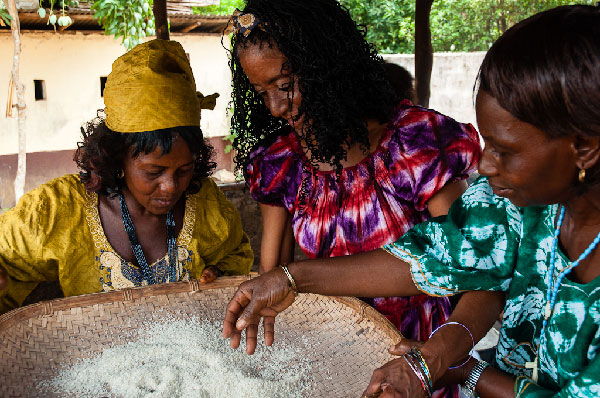
HAVANA TIMES — My interview with Emma Christopher, director of the documentary “They Are We”, and the film’s still photographer and field producer, Sergio Leyva, not only satisfied my curiosity regarding their personal experiences during the filmmaking process, it also awoke an interest in those four Cubans involved in the project.
To meet with them, I travelled to Perico, a town located in Cuba’s province of Matanzas which I had never heard of. It is situated past Jovellanos, a short distance away from Colon. I feel fortunate my trip was merely three hours long. Had it not been for Sergio, who had to return to Perico to shoot some pick-ups for the documentary and was kind enough to give me a ride there, it could have been six or seven.
Our haste, the limited time we had, didn’t allow for much sightseeing around Perico. I left with the impression of having passed through a rural town where life has a slow pace, where everything arrives late. That said, I also saw a number of booming private restaurants.
Elvira Fumero Añí, born in Perico 58 years ago, is one of my interviewees. She tells me that the town bore the name of Cervantes until the first half of the 19th century and was then re-christened to Perico, after a peddler who had that nickname. She recalls it was a beautiful and very clean town, full of shops run by Chinese immigrants.
Elvira: There were many beautiful houses around the town that have fallen down in the course of time because of a lack of maintenance. The park was beautiful; it could have well been declared a national heritage site, because it was old and had an old-fashioned arbor in the middle. One day, during the seventies, they tore down the arbor and changed the whole structure of the park.
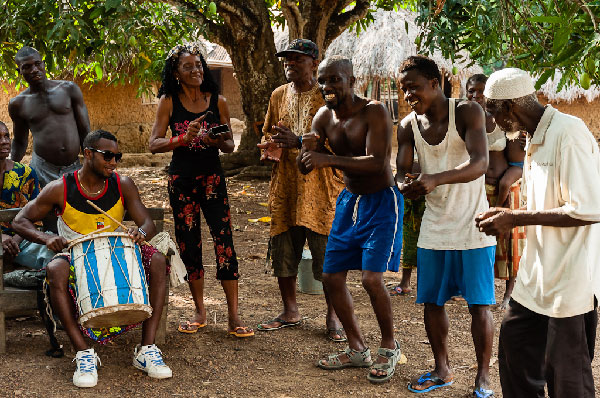
Alfredo Duquesne, my other interviewee, tells me it is difficult to get one’s hands on any type of art literature in the town. He is a self-taught sculptor who became a sculpting teacher at the Matanzas School for Art Instructors.
Alfredo: Sometimes, some book or other I’m interested in comes in at a bookstore in Matanzas, but, when I get there, they’ve run out of copies.
Though both Elvira and Alfredo travelled to Sierra Leone, they are not descendants of Josefa, who was torn from her home in Liberia by Spanish colonists and brought to Cuba as a slave. Humberto Casanova Corvea (Cuco) and his grandson Tandrys Izquierdo Casanova, direct descenants of Josefa, were unable to meet with me for work-related reasons.
Alfredo: My grandmother was a very close friend of Florinda Diago’s, who was a descendant of Josefa. Other members of the Ganga tribe, the precursors of these traditions in Cuba, were in the same ship that brought her from Africa. These traditions were passed on to me through my grandmother and aunt. I’ve known the dances, the songs and the ritual beating of the drums since I was a kid, because I was raised within the traditions, though I’m not a member of the Ganga Longoba African culture group. My aunt is always singing traditional songs and my grandmother used to tell me many stories from the old country. In Mukpangumba, I played the drums and danced.
I don’t know the exact place in Africa my ancestors lived. Orlando Herrera, Perico’s former city historian, used to say we must have come from Nigeria or the Congo, because of our physical features.
Elvira tells me that the Ganga Longoba is a unique ethnicity in Latin America.
Elvira: Josefa was sold to a sugar refinery named Santa Elena, whose owner was surnamed Diago. That was the surname she and all of her descendants were given. Traditions have been passed on from one generation to the next orally.
Elvira, however, is not in any way related to Josefa. Nor does she belong to Alfredo’s family.
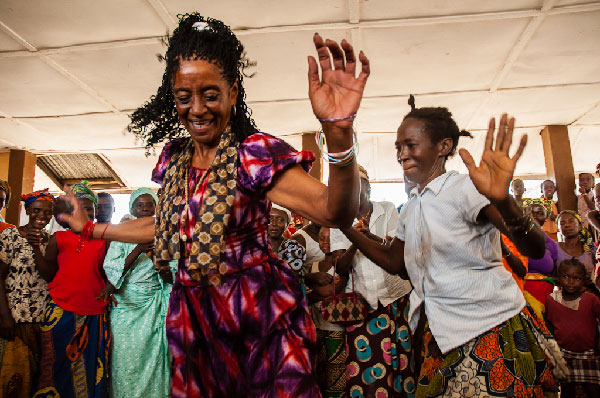
Elvira: I used to come and take part in the festivities as a little girl and I was always drawn to these traditions. As time went by, I became more and more interested. I would tell myself that I would one day belong to the community.
Florinda, the grandmother of Alfredo and Magdalena Mora Herrera (Alfredo’s aunt, “Piyuya”), were the founders of the Ganga Longoba group, which helped in the preservation of traditions. I joined the group as a dancer, but I soon started to listen to Piyuya sing and got the gist of it very quickly. She’s made me the singer in the group. She didn’t pass on the secrets to me, because she doesn’t know them herself. The ancestors took these with them to the grave.
HT: What do you know about your own ancestors?
Elvira: The ancestors of my great-grandfather on my mother’s side were Chinese. He married a woman from Haiti. We’re a mixture of Chinese and African. There were many Chinese altars with burning incense around my house and a large Buddha, but nothing from Africa. I always felt attracted by African traditions, however.
Elvira was a cabaret singer for twenty years. She is an entirely self-taught performer. She sings all traditional Cuban music genres, from boleros, through son to guarachas. On Saturdays, she sings at the “Friends of Bolero Club” (“Club de Amigos del Bolero”).
Elvira: But my work with Ganga Longoba is what I enjoy doing the most.
HT: Were you not afraid of getting a cold reception at Mukpangumba, since you’re not a direct descendant of Josefa’s, and aren’t related to Piyuya, who created the group and has maintained the song and ceremony traditions?
Elvira: A little bit, at first. But, as soon I set foot there, I knew they’d welcome me, and that’s what happened.
Alfredo: One of the things that stayed with me was the spirituality I felt in that place, and the undecipherable glow in people’s eyes. At times, I couldn’t tell whether it was joy, sadness or longing. They welcomed us with all the love in the world. I was very much impressed by the fact they don’t complain about anything, and I now ask myself whether we ought to feel entitled to do so.
HT: Weren’t you a bit shocked by this extremely poor village without bathrooms, drinking water or any kind of facilities we’re used to?
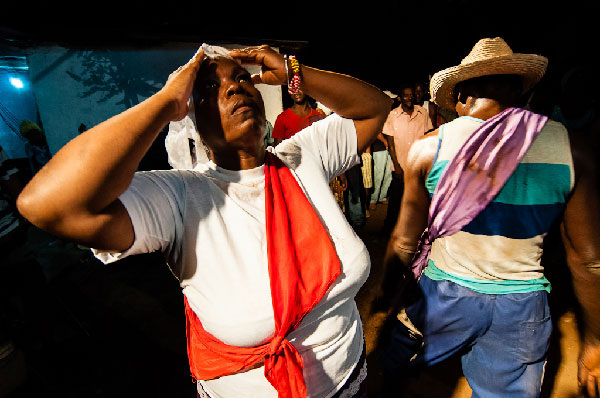
Alfredo: Yes and no. Sometimes, when I come home and I really have to go, I pee out in the backyard. There, I was so humbled by their ways that I asked where I could urinate. Someone pointed out some bushes to me. That’s a natural thing for them, and it made me wonder what kind of lives we’re leading here. They put together a small outhouse for us. At first, we would close the door. Later, we realized it wasn’t necessary, because there wasn’t a drop of evil in them. I came to feel very comfortable among them.
HT: However, in this day and age, women are subjected to clitoridectomies there. Didn’t that shock you?
Alfredo: A lot. I was talking to Elvira about that. Our visit may have brought a tiny bit of joy into their lives. They were able to see how people live in other parts of the world. I wonder how many more generations of women have to suffer such abuse and mistreatment for that to come to an end. I believe the world has to become aware of this situation and do something about it.
Elvira: Sometimes, I would look at them and say to myself: “No one can live like that.” But, it was their rules and I had to respect them. That’s what got to me, not so much the lack of electricity, or having had to wash my clothes at the banks of a river, or carry pitchers of water to bathe with. I wasn’t taken aback by the food either. I have trouble sleeping here, but, there I slept like a baby, I felt very relaxed.
Alfredo: I would look at how happy the little girls were, oblivious as to what was in store for them years later, and I couldn’t help but share their moment of happiness.
HT: Do you intend to keep in touch with the community in any way?
Alfredo: There’s a sculpting and canoe-making community project there, and there are people looking for ways to promote tourism in the area. There are plans to teach the children there how to sculpt, because the few people in the community that we saw know how to sculpt do not share their secrets with others. It would be good, not only for the kids to have a livelihood in the future, but also as a means of promoting cultural exchanges, through which they can learn about life on this end of the world and for us to be able to learn from them, who have a lot to teach.
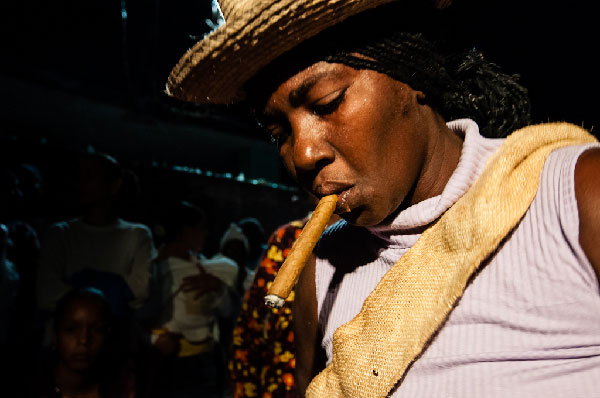
HT: You speak of promoting tourism there. Wouldn’t that kill some of the innocence you were so moved by and miss so much about Mukpangumba?
Alfredo: The Western world has already contaminated Africa. They’ve been spared some of that because they live in a more remote place, though some have already come into contact with the Western way of life. I don’t believe this kind of contact would ruin the best things the community has. They’ll always show more respect towards us then we do towards their traditions. What’s more, they’ve suffered a lot and do not ever want to return to the past, to the wars they went through.
HT: Are you planning to return to Sierra Leone?
Alfredo: Yes.
HT: How? I imagine you’re not counting on Emma Christopher to arrange another trip there. Though you don’t need a permit to travel anymore, you do need money. You said before that you make a living selling sculptures, but you’d have to save quite a lot. How do you think you will manage to travel, then?
Alfredo: I don’t know, it could be through a cultural exchange program or some other means. The die is cast. We’ve already established ties with these people and can’t simply leave things there. It’s important that we go back, so they know we’re thinking about them. I also hope they’re able to travel here at some point in time. I know traveling there again will be difficult. But these ties are two hundred years in the making and I don’t want another two hundred years to go by before new generations meet again. I might not be able to go back in two or three years’ time, but I will, sooner or later. I’ll have to show restraint in a number of things, save up, to be able to go back to Sierra Leone.
Elvira: I have a brother who lives in London. I’m thinking of asking him for some help.
HT: He could invite you to England, to see the First World.
Elvira: That’s true. But, if I had a choice, I’d choose to go back to Sierra Leone.
HT: Would you like to say anything more to the readers of Havana Times, who have this story from the publication of the articles by Emma Christopher and Sergio Leyva?
Elvira: That they read up about this. They will find surprising things. I encourage them to delve deep into the subject.
Alfredo: That they make this trip known, that they learn about the history of Sierra Leone and Africa.
The Ganga Longoba group has participated at cultural gatherings and festivals across Cuba. Every 17th of December, they organize a festivity attended to by all the locals and people from out of town, and even from abroad. A proposal to declare the group Cultural Heritage of Humanity by UNESCO, owing to its importance in the preservation of ancestral traditions.
The documentary “They Are We” will be screened at Havana’s African Culture Center (“La Casa de Africa”) in November. The same venue will house an exhibition of Alfredo Duquesne’s sculptural pieces and photos by Sergio Leyva.
Click on the thumbnails below to view all the photos in this gallery. On your PC or laptop, you can use the directional arrows on the keyboard to move within the gallery. On cell phones use the keys on the screen.















